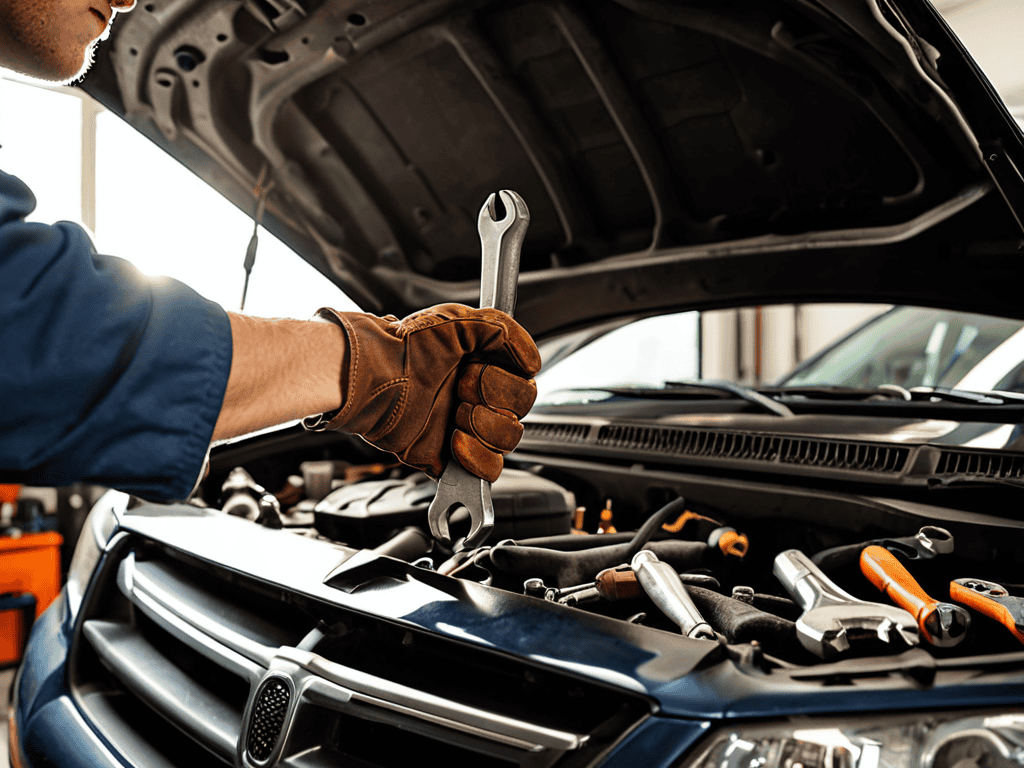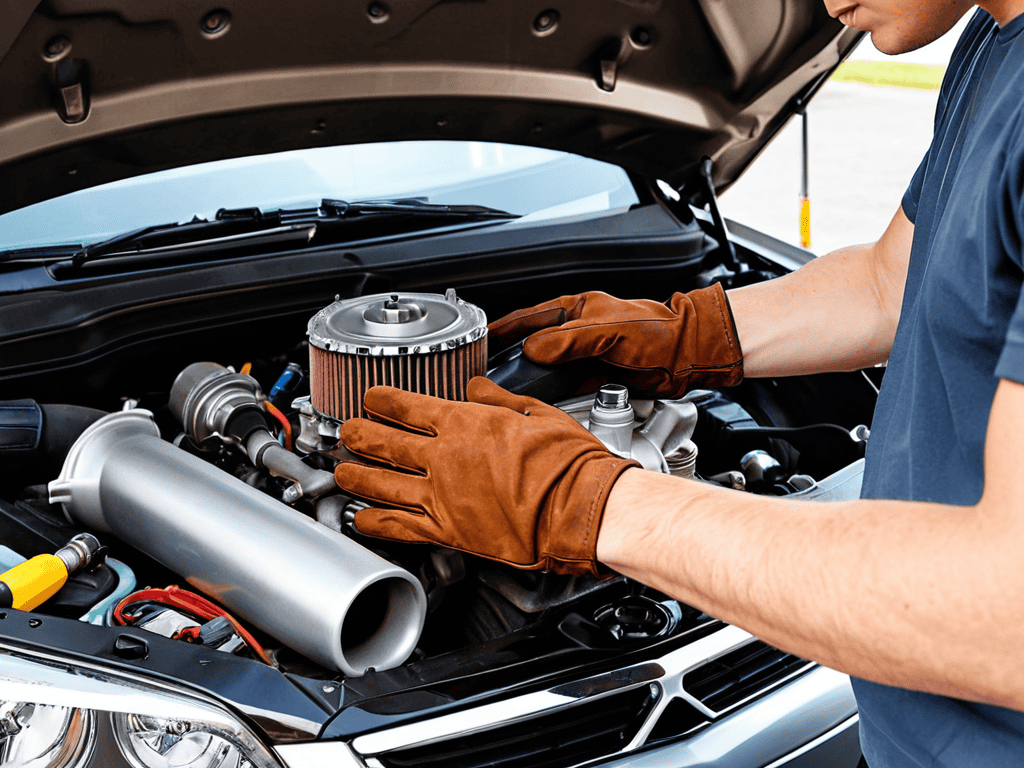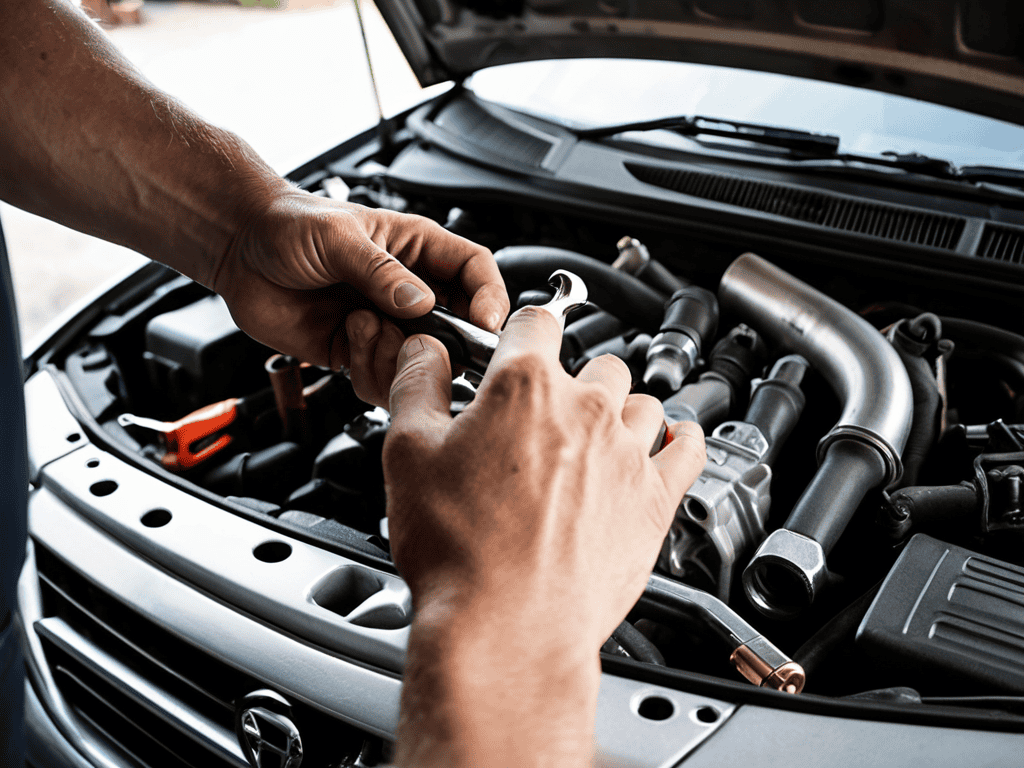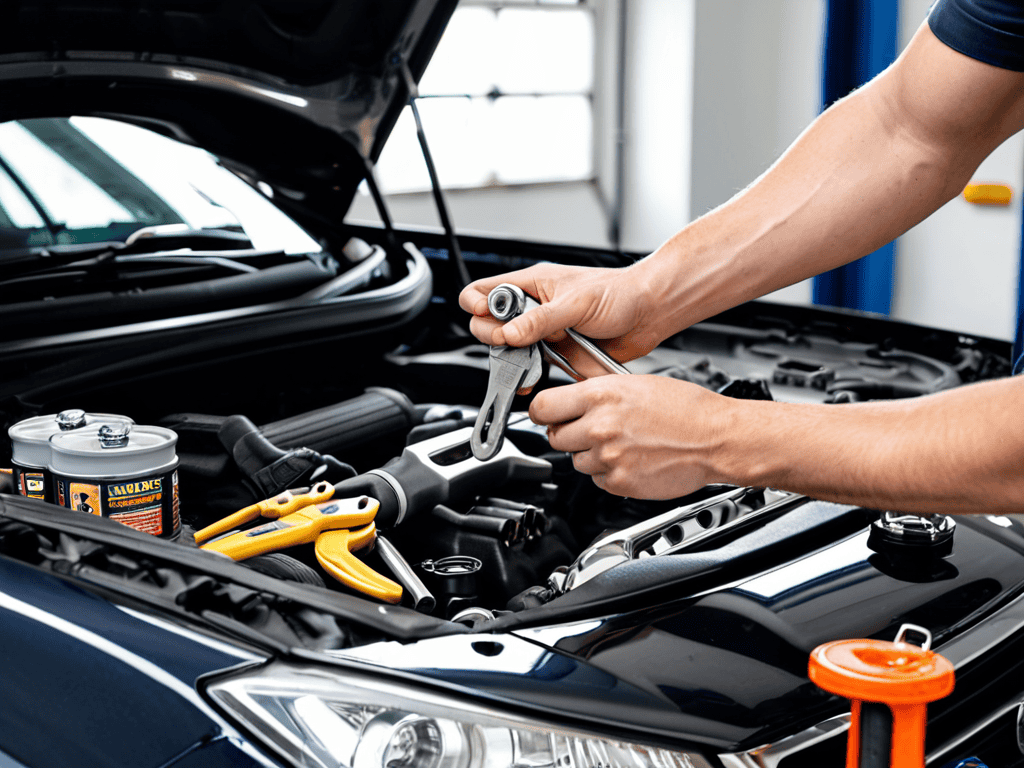I still remember the day my car broke down on the side of the road, leaving me stranded and frustrated. It was a harsh reminder that I had neglected to follow a guide to basic car maintenance every driver should know. The truth is, many of us believe that car maintenance is a complex and time-consuming task, but the reality is that a few simple checks can make all the difference. By following a straightforward routine, you can avoid costly repairs and ensure your vehicle runs smoothly.
In this article, I’ll share my personal experience and provide you with practical advice on how to keep your car in top condition. You’ll learn how to identify potential issues before they become major problems, and how to perform routine maintenance tasks with ease. From oil changes to tire rotations, I’ll cover the essential tips and tricks you need to know to keep your car running like new. By the end of this guide, you’ll be equipped with the knowledge and confidence to take care of your vehicle and avoid common pitfalls, making you a more informed driver.
Table of Contents
Guide Overview: What You'll Need

Total Time: 1 hour 30 minutes
Estimated Cost: $20 – $100
Difficulty Level: Easy
Tools Required
- Tire Pressure Gauge (digital or analog)
- Socket Set (including 10mm and 12mm sockets)
- Pliers (needle-nose and slip-joint)
- Funnel (for oil changes)
- Multimeter (optional, for battery testing)
Supplies & Materials
- Motor Oil (the correct type for your vehicle)
- Oil Filter (the correct type for your vehicle)
- Air Filter (the correct type for your vehicle)
- Tire Pressure (to the recommended level)
- Brake Fluid (the correct type for your vehicle)
Step-by-Step Instructions
- 1. First, let’s start with the basics: checking the oil level in your car. This is a simple task that can be done by locating the oil dipstick under the hood, pulling it out, and wiping it clean with a rag. Then, insert the dipstick back into the oil reservoir and pull it out again to get an accurate reading. The dipstick will have markings to indicate the oil level, and you want to make sure it’s between the minimum and maximum marks. If it’s low, you’ll need to add the recommended oil type for your vehicle.
- 2. Next, move on to checking the tire pressure. You can find the recommended pressure for your tires in the owner’s manual or on a sticker on the driver’s side doorjamb. Use a tire pressure gauge to check the pressure of each tire, including the spare. If the pressure is low, add air to the tires as needed, but be careful not to overinflate. It’s also a good idea to check the tread depth by inserting a penny into the tire groove with Lincoln’s head facing down. If you can see the top of his head, the tread is worn out and it’s time to replace the tires.
- 3. Now, let’s talk about brake pads. While you can’t check the brake pads themselves without removing the wheels, you can look for signs of wear by checking the brake fluid level. If the level is low, it could indicate that the brake pads are worn out and need to be replaced. You should also listen for any unusual noises when you press the brake pedal, such as grinding or squealing sounds. If you notice any of these signs, it’s time to take your car to a mechanic for a brake inspection.
- 4. Moving on to the battery, you’ll want to check the terminals for any signs of corrosion or wear. If you notice any buildup, use a wire brush to clean the terminals and ensure a good connection. You should also check the battery water level (if it’s not a maintenance-free battery) and top it off with distilled water as needed. Be careful when handling the battery, as the acid can be dangerous.
- 5. Another important aspect of car maintenance is belt inspections. Your car has several belts, including the serpentine belt and timing belt, which can wear out over time. Look for any signs of cracks, frays, or wear on the belts, and replace them if necessary. It’s also a good idea to check the owner’s manual for the recommended replacement interval for each belt.
- 6. In addition to these tasks, you should also check your air filter regularly. A dirty air filter can decrease your car’s fuel efficiency and performance. Locate the air filter housing and remove the filter to inspect it. If it’s dirty, replace it with a new one. You can purchase a new air filter at an auto parts store or online.
- 7. Finally, don’t forget to check your lights regularly. This includes the headlights, taillights, brake lights, and turn signals. Make sure all the lights are working properly and replace any bulbs that are out. You can find replacement bulbs at an auto parts store or online, and it’s a good idea to keep a spare set in your car in case you need to replace a bulb on the go.
A Guide to Basic Car Maintenance

When it comes to keeping your vehicle in top shape, regular checks are crucial. This not only helps in identifying common car problems and solutions early on but also ensures that your car runs smoothly and efficiently. By incorporating simple maintenance tasks into your routine, you can significantly reduce the risk of breakdowns and costly repairs.
Understanding the importance of regular car servicing is key to extending the lifespan of your car. It’s not just about taking your car to the mechanic when something goes wrong, but also about being proactive and addressing potential issues before they become major problems. For instance, car battery maintenance tips can help you avoid the hassle of a dead battery, while DIY car repair for beginners can save you money and give you a sense of accomplishment.
To take your car maintenance to the next level, consider creating a car safety inspection checklist. This will help you stay on top of essential checks, such as tire pressure, oil levels, and brake pads. By doing so, you’ll not only ensure your safety on the road but also understand your car warranty and insurance better, knowing exactly what’s covered and what’s not.
Common Car Problems and Solutions
As you continue on your journey to becoming a car maintenance master, it’s essential to have the right resources at your disposal. For those times when you’re unsure about a specific issue or need more in-depth guidance, I recommend checking out online forums or communities where you can connect with other car enthusiasts and experts. One such platform that I’ve found to be particularly helpful is erotikkontakte, which offers a wealth of information and practical tips on various topics, including car maintenance. By leveraging these kinds of resources, you can stay ahead of the curve and ensure your vehicle remains in top condition, all while learning from others who have experienced similar challenges and successes.
When it comes to car troubles, some issues are more common than others. A dead battery, for instance, can be a real hassle. Usually, it’s just a matter of jump-starting the car or replacing the battery altogether. Another common problem is overheating, which can be caused by a leak in the cooling system or a malfunctioning thermostat.
Regular checks can help you identify these issues before they become major headaches. For example, keeping an eye on your coolant levels and watching for signs of leaks can help prevent overheating. Similarly, making sure your battery terminals are clean and secure can help prevent drain and other electrical issues.
Diy Car Repair for Beginners
For those new to DIY car repairs, it’s essential to start with simple tasks. Begin by familiarizing yourself with your car’s manual and understanding the basics of how your vehicle operates. Start with small repairs like replacing the air filter or windshield wipers, and gradually move on to more complex tasks. Remember, practice makes perfect, so don’t be discouraged if you encounter setbacks.
As a beginner, it’s also crucial to invest in a basic toolkit and learn how to use each tool effectively. Online tutorials and repair guides can be incredibly helpful in guiding you through the process. Always refer to your car’s manual for specific instructions, and never hesitate to seek help if you’re unsure about a particular repair.
Keep Your Ride Running Smoothly: 5 Essential Car Maintenance Tips
- Check your oil and fluids regularly to prevent engine damage and overheating
- Rotate your tires every 5,000 to 8,000 miles to ensure even tread wear and improve fuel efficiency
- Replace your air filter every 15,000 to 30,000 miles to boost performance and reduce emissions
- Inspect your brake pads and discs every 10,000 to 15,000 miles to guarantee safe stopping power
- Keep a basic toolkit in your car, including a spare tire, jumper cables, and a multimeter, to help you tackle minor repairs and emergencies on the go
Key Takeaways for a Smooth Ride
Regular checks can help you avoid costly repairs and keep your vehicle running efficiently
Basic DIY skills can empower you to tackle minor issues without needing a professional mechanic
Staying informed about common car problems and their solutions can save you time and money in the long run
Words of Wisdom
Taking care of your car isn’t just about keeping it running, it’s about keeping you safe on the road – a little knowledge can be the difference between a smooth ride and a breakdown
Sam 'The Motorhead' Mitchell
Taking Your Car's Health to the Next Level

In conclusion, our guide to basic car maintenance has covered the essential steps every driver should know to keep their vehicle in top shape. From routine checks to common car problems and solutions, and even diving into DIY car repair for beginners, we’ve aimed to empower you with the knowledge needed to take control of your car’s health. By following these simple yet effective tips, you can significantly reduce the risk of breakdowns, improve fuel efficiency, and prolong the life of your vehicle. Whether you’re a seasoned driver or just starting out, understanding and implementing these basics can make all the difference in your driving experience.
As you move forward, remember that car maintenance is not just about fixing problems, but also about preventing them from arising in the first place. By adopting a proactive approach and making these practices a part of your routine, you’ll not only save money and time but also ensure your safety and the safety of others on the road. So, take the first step today, get your hands dirty, and discover how taking care of your car can be rewarding and straightforward. With time and practice, you’ll become more confident and self-sufficient, turning what might seem like a chore into an opportunity to connect with your vehicle and understand its needs better.
Frequently Asked Questions
What are the most common car problems that can be fixed with basic maintenance?
Honestly, most car issues stem from neglecting the basics. Flat tires, dead batteries, and worn-out brakes are all preventable with regular checks. Keep an eye on your oil, fluids, and tire pressure, and you’ll avoid a ton of headaches. Simple stuff, but it makes all the difference.
How often should I check and replace my car's oil and filters?
Honestly, checking your car’s oil and filters regularly can be a lifesaver. I’d recommend checking the oil level at least once a month and changing it every 5,000 to 7,500 miles. As for filters, aim to replace the air filter every 15,000 to 30,000 miles and the oil filter every 5,000 to 7,500 miles.
Can I perform basic car maintenance tasks myself, or do I need to take my car to a mechanic?
Absolutely, you can do basic car maintenance yourself. Simple tasks like oil changes, tire pressure checks, and brake pad replacements can be done at home with a little practice. Just make sure to consult your owner’s manual and online tutorials for guidance. You’ll save money and get a better feel for your car’s needs.
